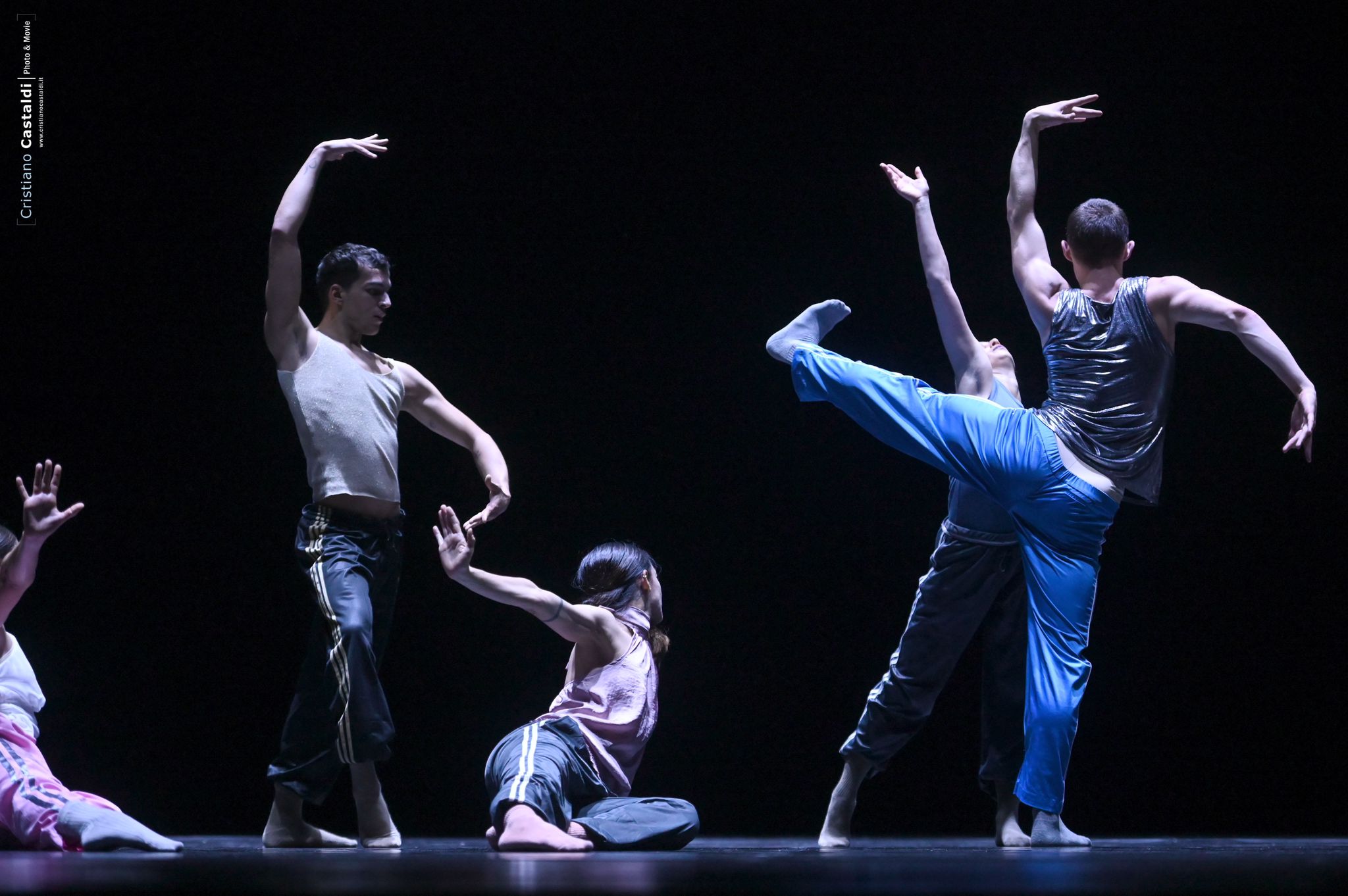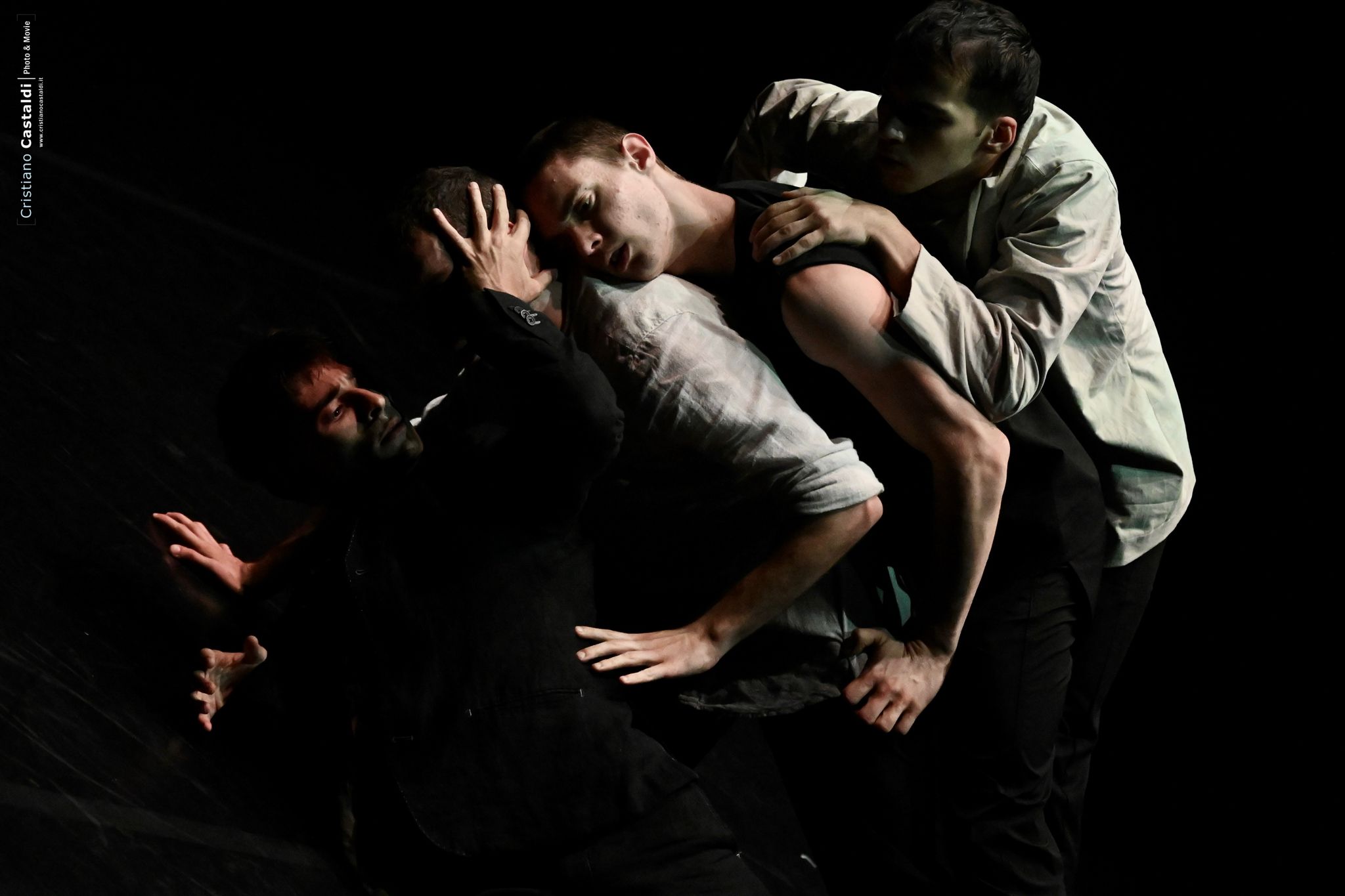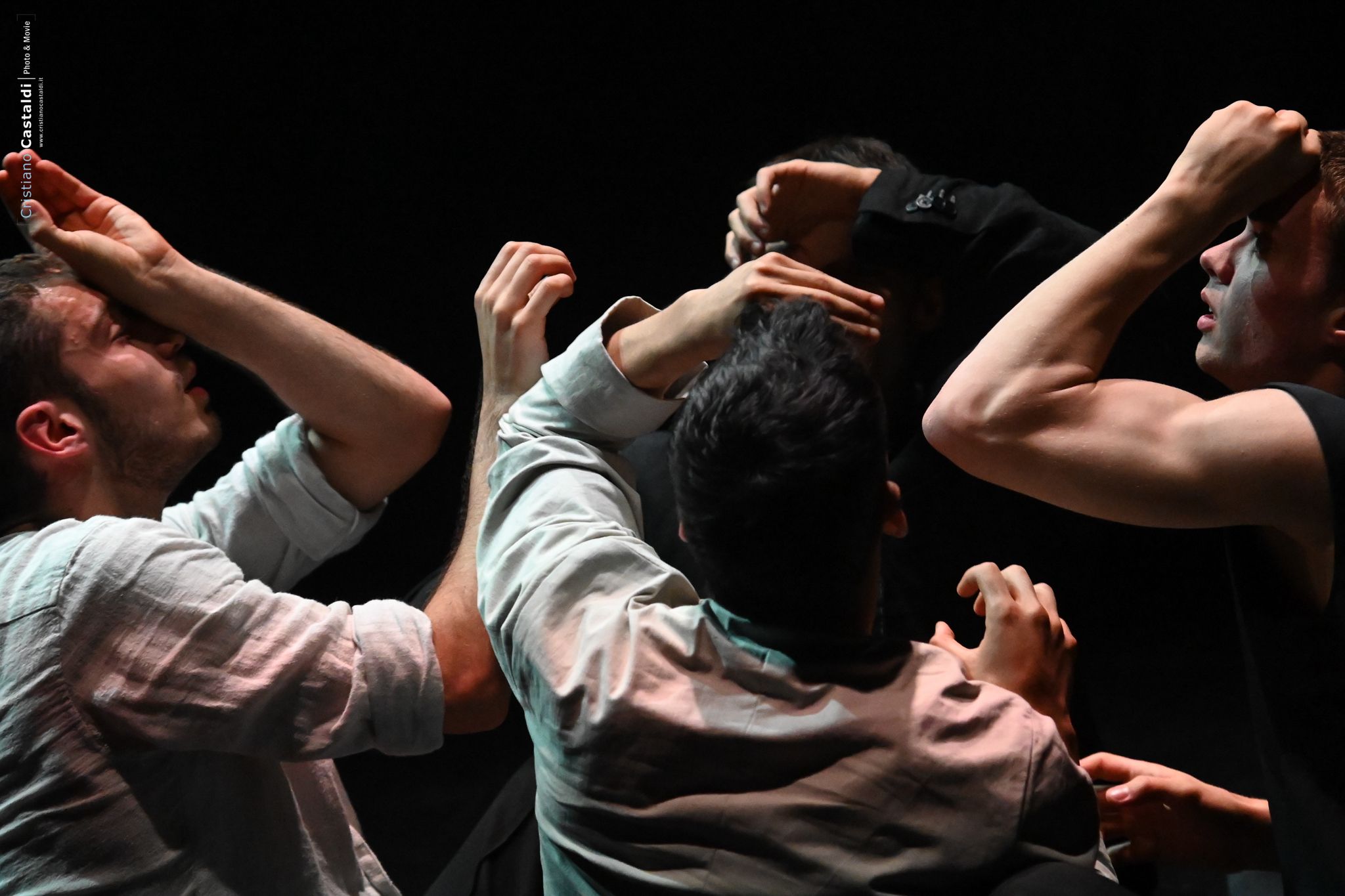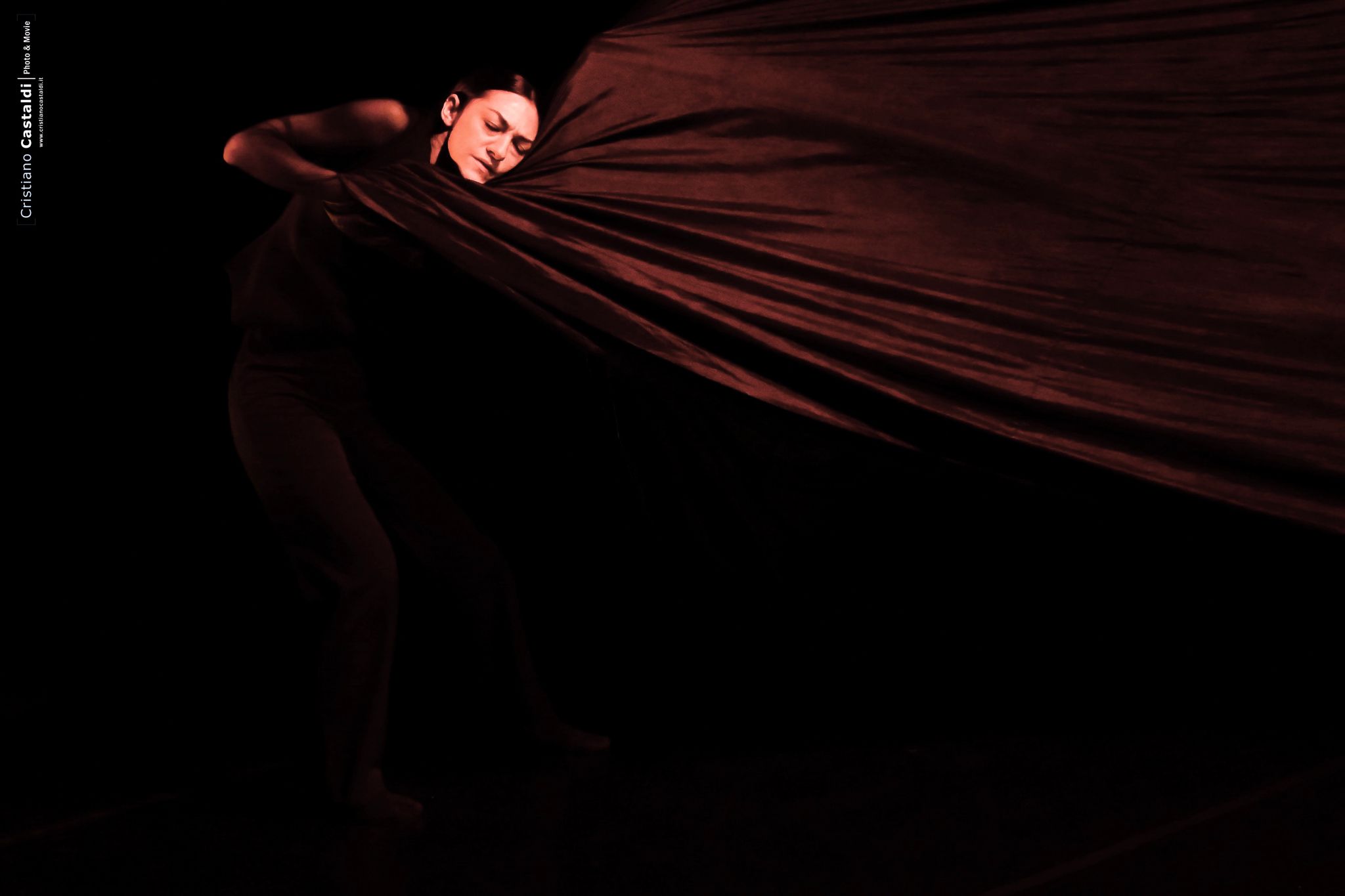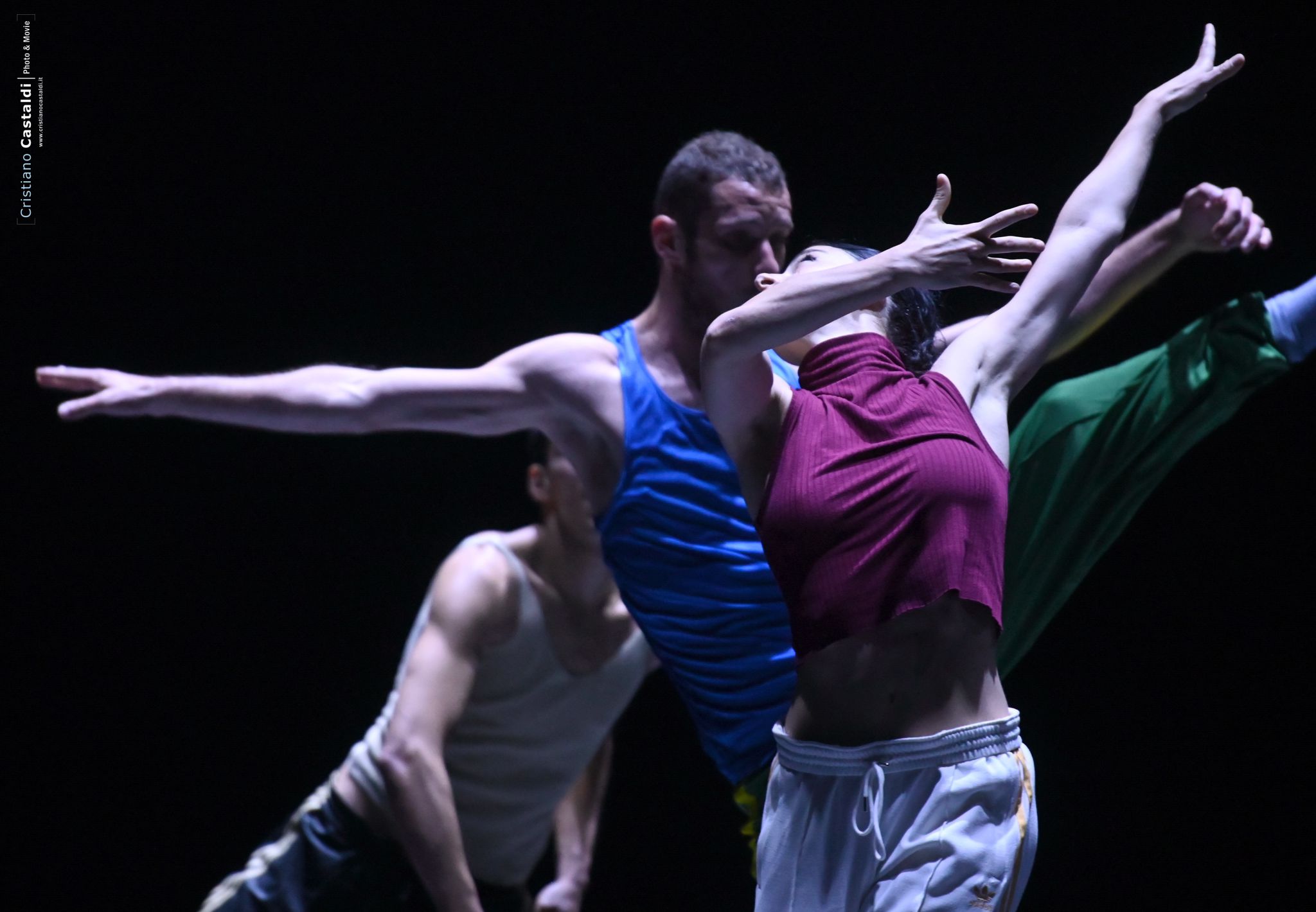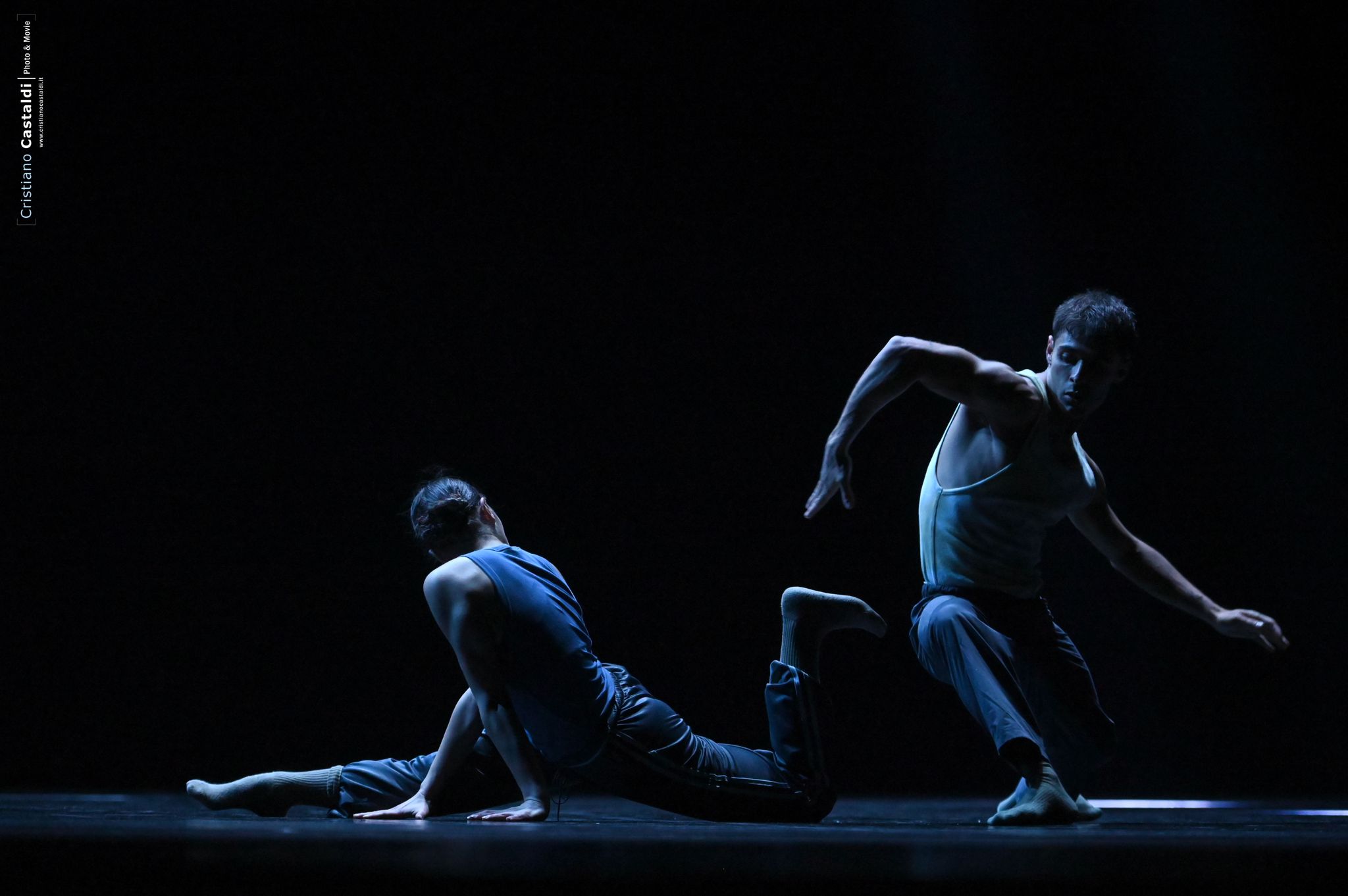30 years of Spellbound Contemporary Ballet
Double Bill
Jacopo Godani – “Forma mentis”
Mauro Astolfi – “Daughters and angels”
We live in a planet full of memories. It took about thirty years to learn how to put together ours and not becoming their slaves.
The memory of the first fall, that moment before and most of all after it made us realize that pushing towards deeper experiences has been a good thing.
This is our starting point, born from both the idea and the attempt to tell about the interconnection between everything we’ve been through.
Thirty years to realize we will never be independent isles, but a part of a whole.
We will probably nurture us with richer memories, maybe increasingly chaotic, but still something we put inside us and then pull out of ourselves.
Recollection of a falling is our accessible and endlessly extensible data system. As human beings, we have provided enough evidence of our capability to destroy everything: the memory of a fall, small or dangerously big, can be the best way to reconnect us to the natural world, in order to jump in it and rebuild it.
Part one
Forma mentis
Forma mentis is a choreographic experience that celebrates young extraordinary dancers involved in the creation of an artistic manifesto for the new generations. This new creation sees Jacopo Godani using the art of “intelligent dance” as an implement and as a mean of forthright communication with the new generations.
Aware of the many facets attached to art during the last decades, Jacopo Godani seeks for a balance between the presentation of contemporary art defined from an ethic point of view, and the creation of an implement to support young artists and allow them to turn their creativity into concrete ideas and ability to plan.
Forma mentis is a vibrant platform which aims to investigate, through one’s own intelligence, the potential of dance as a universal language. Each step, each movement is an opportunity to express ideas and visions, creating a dynamic dialogue with oneself, the audience and future generations. In this creative space Godani recognize the value of talent and professional determination. Each dancer, each artist is a beacon who inspires those who yearn for their dreams to come true.
Forma mentis is not just a performance, it’s a commitment to create a lasting impact, using dance as an implement for encouraging a diversity of ideas and perspectives. Every movement on the stage is a step towards the discovery and the celebration of the human potential.
Forma mentis is a call to explore, to dream and to create; it’s an opportunity for the new generations to materialize their thoughts, to feed their visions and their ambitions.
Part Two
Daughters and angels
Daughters and angels is inspired by Isabel Pérez’s essay “Knowledge and Powers”. Published by Duoda, an interdisciplinary research center of the University of Barcelona, internationally recognized in the field of Women’s Studies, the text captivated Mauro Astolfi’s interest on whichcraft, which dates back to his teenage years. Astolfi’s interest goes beyond the cinematographic fictional universe and the gloss of magic; it is indeed much more addressed to the cultural constructs, the gender stereotypes, the language, the abuse of power which even today is still firmly rooted.
According to Isabel Pérez Molina, in the Western history women in the medical field were the first to know and to practise different types of therapeutical solutions. During Middle Ages they were healers, anatomists, pharmacologists, connoisseurs of medicinal herbs and knowers of the secrets of empiric medicine, which had been passed down from generation to generation.
The community acknowledged them as “wise women” yet “chafarderas” (gossipy), before institutions started to consider them “witches”. They destabilized a certain system which was organized and held by men, defying the limits dictated by the dominant gender models to the point of becoming a problem for the male élite, which was feudal and patriarchal.
During the Renaissance the misogynist strain consolidated, together with the dynamics which left women out of every field. It was at that time that the battle for the male control of knowledge hardened and the witch-hunt began.
In Daughters and angels Mauro Astolfi revises history, feelings, and personal perceptions, to stress the insane automatism which leads everything that is unknown to become violence, refusal and annihilation. On stage, a big black piece of silk represents the imaginary boundary of a place to gather at night, to hide and decide how to survive to legitimized ignorance. Black as a block, a denial, an opposition, a protest against power, against control, against mystery. But also as a safe, private, and mysteriously inaccessible place.
“In Daughters and angels I don’t tell about magic, I tell about the possibility for male gender to take a path of knowledge, to get to know his feminine by dismantling gender stereotypes and by questioning some masculine strongholds. I try to recover an ancient information, the simple power of knowledge which has no belonging and no supremacy. I imagine a woman who, as a daughter, remembers and amplifies everything she has learnt from the source; man seems to have forgotten almost everything “
Mauro Astolfi
